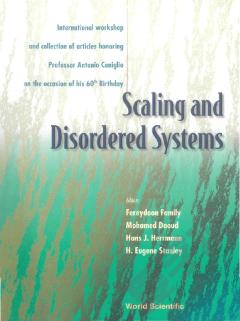Scaling And Disordered Systems: International Workshop And Collection Of Articles Honoring Professor Antonio Coniglio On The Occasion Of His 60th Birthday
Investigation of the fractal and scaling properties of disordered systems has recently become a focus of great interest in research. Disordered or amorphous materials, like glasses, polymers, gels, colloids, ceramic superconductors and random alloys or magnets, do not have a homogeneous microscopic structure. The microscopic environment varies randomly from site to site in the system and this randomness adds to the complexity and the richness of the properties of these materials. A particularly challenging aspect of random systems is their dynamical behavior. Relaxation in disordered systems generally follows an unusual time-dependent trajectory. Applications of scaling and fractal concepts in disordered systems have become a broad area of interdisciplinary research, involving studies of the physics, chemistry, mathematics, biology and engineering aspects of random systems.This book is intended for specialists as well as graduate and postdoctoral students working in condensed-matter or statistical physics. It provides state-of-the-art information on the latest developments in this important and timely topic. The book is divided into three parts: Part I deals with critical phenomena, Part II is devoted to discussion of slow dynamics and Part III involves the application of scaling concepts to random systems. The effects of disorder at the mesoscopic scale as well as the latest results on the dynamical properties of disordered systems are presented. In particular, recent developments in static and dynamic scaling theories and applications of fractal concepts to disordered systems are discussed.
{{comment.content}}








 京公网安备 11010802027623号
京公网安备 11010802027623号